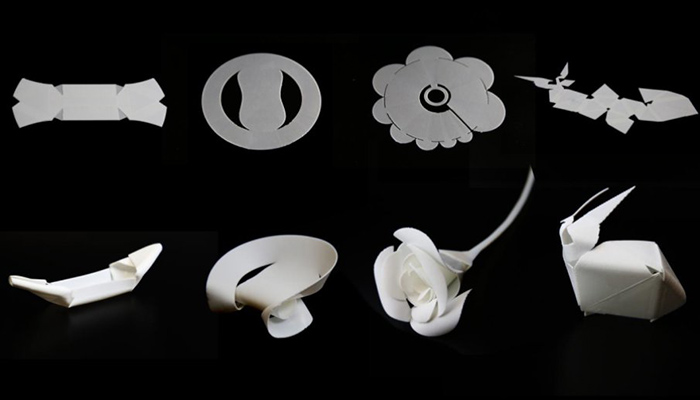
Researchers at Carnegie Mellon University have used an inexpensive 3-D printer to produce flat plastic items that, when heated, fold themselves into predetermined shapes, such as a rose, a boat or even a bunny.
Self-folding materials are quicker and cheaper to produce than solid 3-D objects, making it possible to replace noncritical parts or produce prototypes using structures that approximate the solid objects. Molds for boat hulls and other fiberglass products might be inexpensively produced using these materials.
Other researchers have explored self-folding materials, but typically have used exotic materials or depended on sophisticated processing techniques not widely available. Yao and her research team were able to create self-folding structure by using the least expensive type of 3-D printer — an FDM printer — and by taking advantage of warpage, a common problem with these printers.
FDM printers work by laying down a continuous filament of melted thermoplastic. These materials contain residual stress and, as the material cools and the stress is relieved, the thermoplastic tends to contract. This can result in warped edges and surfaces.
To create self-folding objects, this process is precisely controlled by varying the speed at which thermoplastic material is deposited and by combining warp-prone materials with rubber-like materials that resist contracture.
The objects emerge from the 3-D printer as flat, hard plastic. When the plastic is placed in water hot enough to turn it soft and rubbery — but not hot enough to melt it — the folding process is triggered.
Though these early examples are at a desktop scale, making larger self-folding objects appears feasible.
